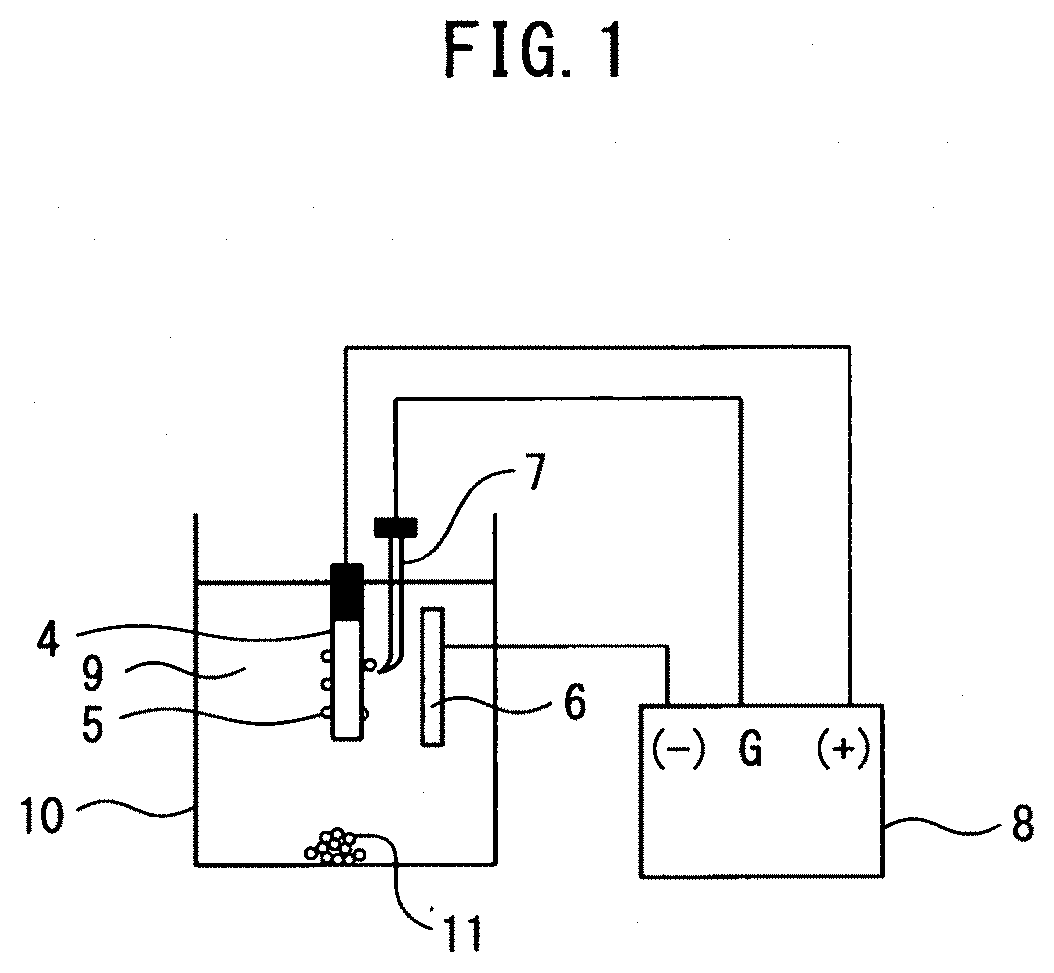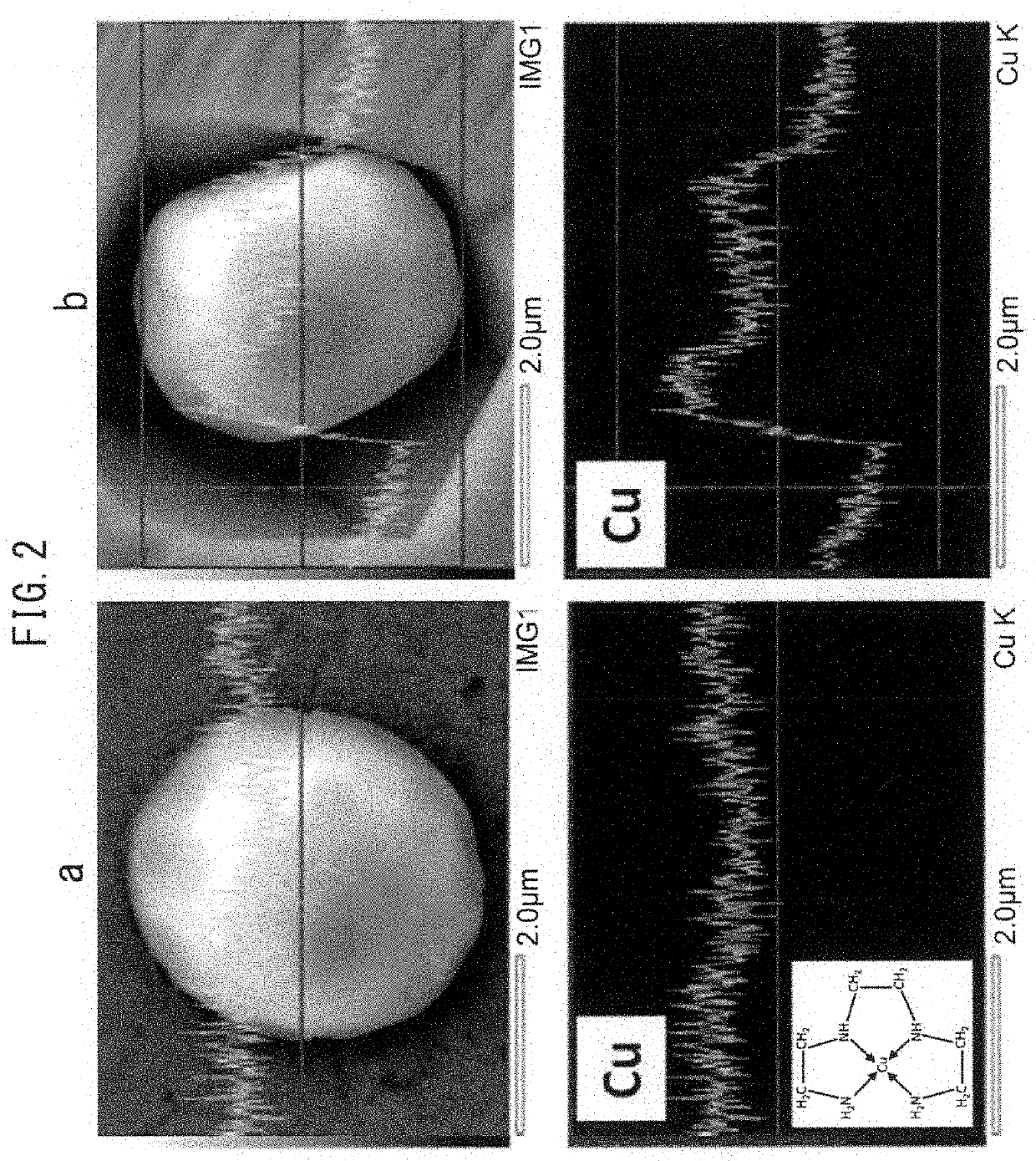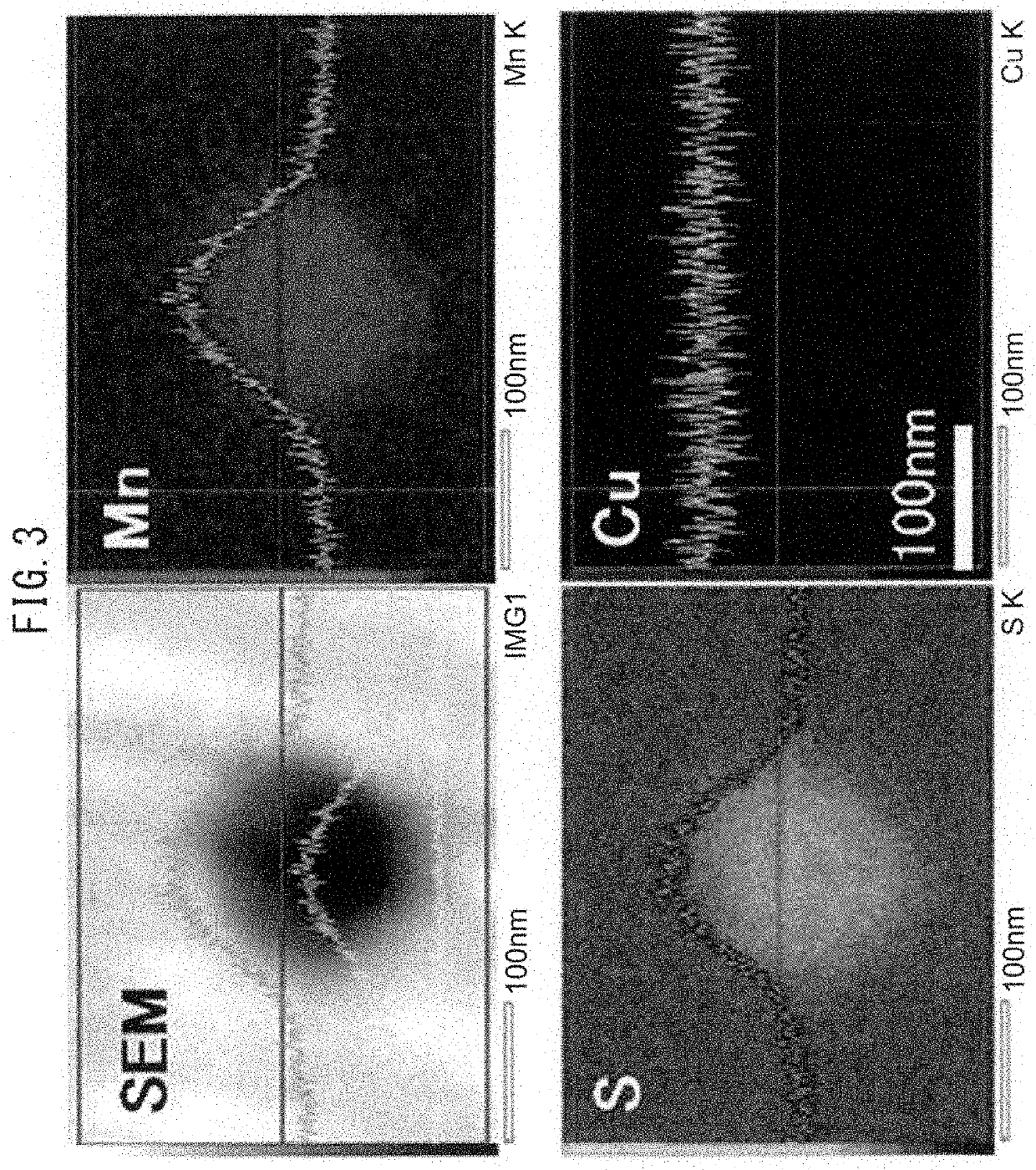Method for extracting metal compound particles, method for analyzing the metal compound particles, and electrolytic solution used therefor
a metal compound and metal technology, applied in the field of metal compound particles, can solve the problems of inability to accurately quantify mns, and achieve the effects of accurate measurement, improved identification and quantitative analysis of inclusions and precipitates, and improved quantitative analysis accuracy
- Summary
- Abstract
- Description
- Claims
- Application Information
AI Technical Summary
Benefits of technology
Problems solved by technology
Method used
Image
Examples
example 1
[0115]Hereinafter, the present invention will be described by means of working examples. However, the present invention should not be construed as being limited to the following examples.
[0116]Observation of inclusions or precipitates in steel samples was carried out by the electrolytic solution and electrolytic method according to the present invention. The inclusions or precipitates of the same steel sample were observed in as the electrolyzed comparative example by using a conventional electrolytic solution (4% MS) containing 4% by mass of methyl salicylate+1% by mass of salicylic acid+1% by mass of tetramethylammonium chloride (TMAC), as a control example, which is conventionally known and capable of collecting conventionally known sulfide-based inclusions as a residue. As the electrolytic solution according to the present invention, an electrolytic solution (5% TETA) of 5% by volume of triethylenetetramine (TETA)+1% by mass of tetramethylammonium chloride (TMAC) was used. Metha...
example 2
[0127]Quantitative analysis of the inclusions or precipitation phases in steel samples was carried out by electrolytic dissolution using the electrolytic solution according to the present invention. As a control example, a comparative example electrolyzed using a conventional electrolytic solution was prepared.
[0128]In this example, a steel material containing 0.4% by mass of Cu was solutionized by heat treatment at 1350° C. for 30 min and then rapidly cooled in water, and the resulting material was used as a steel sample.
[0129]The following three kinds of electrolytic solutions were prepared.
[0130](1) 4% MS: 4% by mass of methyl salicylate+1% by mass of salicylic acid+1% by mass of tetramethylammonium chloride (TMAC) which is conventionally known and can recover sulfide type inclusions as a residue as a control example.
[0131](2) 4% MS+5% TETA: 4% MS described in (1) to which 5% by volume of triethylenetetramine (TETA) capable of forming a complex with Cu ion is added.
[0132](3) 5% T...
PUM
| Property | Measurement | Unit |
|---|---|---|
| Δ | aaaaa | aaaaa |
| solubility | aaaaa | aaaaa |
| strengths | aaaaa | aaaaa |
Abstract
Description
Claims
Application Information
 Login to View More
Login to View More - R&D
- Intellectual Property
- Life Sciences
- Materials
- Tech Scout
- Unparalleled Data Quality
- Higher Quality Content
- 60% Fewer Hallucinations
Browse by: Latest US Patents, China's latest patents, Technical Efficacy Thesaurus, Application Domain, Technology Topic, Popular Technical Reports.
© 2025 PatSnap. All rights reserved.Legal|Privacy policy|Modern Slavery Act Transparency Statement|Sitemap|About US| Contact US: help@patsnap.com



